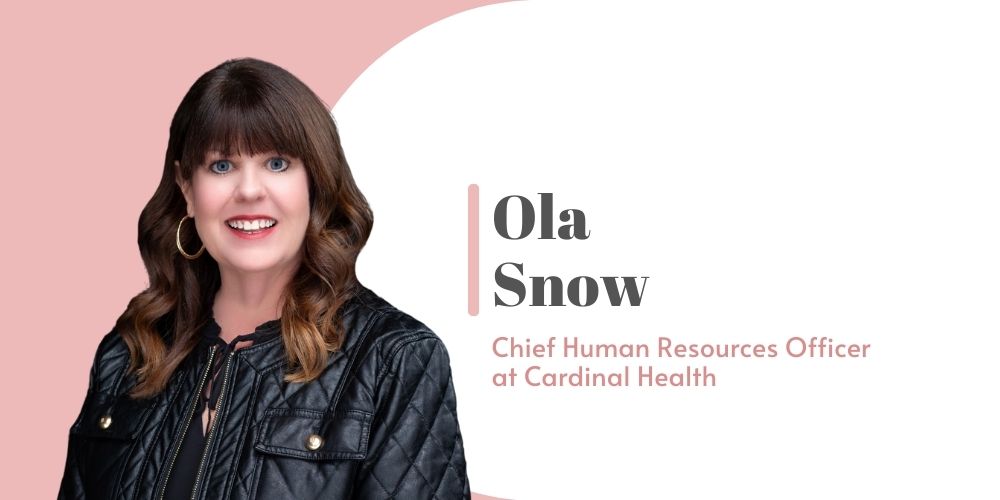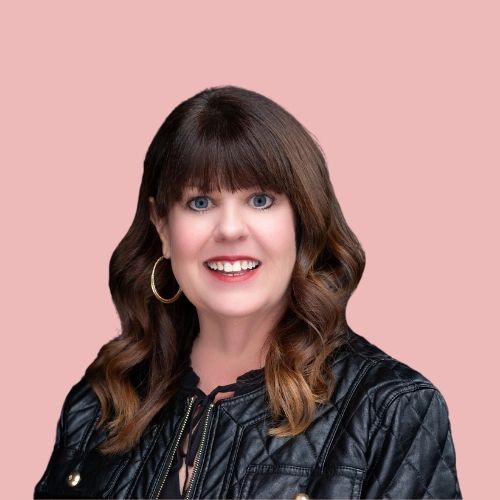Ola Snow, Chief Human Resources Officer at Cardinal Health, brings her 20+ years of life experience, offering a glimpse into the company’s commitment to fostering an inclusive and supportive work environment. Discover how Cardinal Health prioritizes the well-being of its diverse workforce, including tailored mental health initiatives and effective listening strategies for all employees, from veterans to older adults.
Whether you’re a seasoned professional or just starting out, Snow’s insights on mentorship, employee engagement, and embracing company culture offer valuable takeaways for personal and professional growth.

How does Cardinal Health, consistently recognized for its commitment to employee well-being—named as Fortune’s “100 Best Companies to Work For Women” and Forbes’ “America’s Best Large Employers,” Working Mothers’ “100 Best Companies for Working Mothers” —tailor its mental, physical, and emotional health initiatives to the diverse needs of its workforce, including older adults, veterans, and other subgroups? Additionally, how do these initiatives align with broader organizational goals, and what progress has Cardinal Health made toward achieving its well-being objectives?
At Cardinal Health we are driven with a curiosity mindset when it comes to thinking about the diverse needs of our global workforce of 48,000. Given our employees span four to five generations with a wide variety of life experiences and diverse backgrounds, there is no one-size-fits-all strategy. One of our core company values is Inclusion, so we work relentlessly to maintain a culture where everyone can thrive and feel empowered.
This is why my team and I have developed a comprehensive listening strategy to understand where our employees are in their lives and work journeys. Leveraging a variety of listening methods, such as surveys, focus groups, department-wide fireside chats with leaders, and so on, we pull back the layers on the needs of our employees and tackle what matters most to them, while also keeping in mind the needs of our customer and business.
An example of where we take a multifaceted approach to address the diverse needs of our employees is mental well-being. Through our listening strategies, we’ve uncovered that mental health challenges are something that all generations and backgrounds place a heavy importance on, but how they wanted their employer to engage in providing mental health resources varied. Alongside offering a multitude of resources, including but not limited to our Employee Assistance Program (EAP) and Mental Health First Aid Training, we’ve worked tirelessly to destigmatize mental health conversations in the workplace, so any employee, regardless of background, could feel comfortable bringing their full self to work.
Addressing our employees’ mental well-being openly is core to our culture and is one of our organization’s priorities. As a result, we continue to develop global initiatives within our company designed to reduce stigma and increase access to mental health resources for all employees. We also are looking beyond our organization and engaging with cross-section private and public sector leaders to discuss the prevalence of the mental health crisis within our communities. We believe it will take collective action to help our employees, their families, and those within our communities to live happier, healthier, and more productive lives.
This is just one example of how we immerse and prioritize the well-being of our employees into our company’s DNA.
Looking back on your career, what educational influence was the most important in enabling you to become a leader?
I was fortunate to grow up with an educational influence in my household. My mom worked as a professor at a local junior college in South Carolina in the 60s and 70s. During this time, many underrepresented young adults didn’t have the opportunity to pursue a post-secondary education, and when they did it was often through a two-year, junior college. As a result, I would often hear stories about my mom’s students and what many of underrepresented backgrounds faced – whether that be struggles or triumphs – in their day-to-day lives. My mom had a passion for her work and believed everyone, regardless of background, was deserving of attaining a higher level of education. Being exposed to this as a kid fundamentally made me not only appreciate the opportunities and value of an education but also began to model what inclusion and equality looked like.
Growing up in this environment, and being exposed to the education system, really catapulted my growth as a leader. I was able to build on the values I learned from my parents, and it’s why as a leader, I show up passionate about the work I do – making the workplace where everyone feels like they belong, are included, and can thrive.
You are now in command of a workforce of over 48,000 employees. What kind of leadership experience helped you reach the very top of the corporate ladder?
I’ve been lucky enough that for the past 22 years, I’ve been able to grow within one organization supporting many types of businesses and gaining invaluable experience. When thinking about how I achieved this level in my organization, I believe that it’s due to a balance of not only technical expertise but also emotional intelligence and the ability to build trust in the business. There are two experiences that I can think of that helped propel me as a steward of our business, our people, and our customers.
The first was when I was an SVP, and I was part of a team that did a 30-day tour of managing an acquisition in Asia. Not only was I able to welcome some of the new, global employees into our organization, but it was a pivotal time in my career to convey the value HR has in business decisions, especially ones that are highly transformative. Being a part of this project was one of the pinnacle moments of growth for me as someone in the HR function.
The second experience that has one of the most profound influences on how I show up today as a leader is being vulnerable in the workplace. Several years ago, both of my children came out as identifying as members of the LGBTQIA+ community. While I was – and still am – very proud of my kids, I had some reservations about how talking about their identities in the workplace would be perceived. I decided to lean in and reveal that I was a mom of two LGBTQIA+ kids and openly discuss my experiences in the workplace, and to my surprise, it was beyond well received. I received hundreds of notes from my colleagues discussing how my vulnerability made our work environment that much safer to talk and be open about our collective human experiences. This moment set me on a path to champion vulnerability and create a workplace where everyone would be able to show up as their authentic self and thrive.
How have you observed the culture of the boardroom evolve over time, and how does this evolution impact HR strategy and decision-making?
As a senior leader, your relationship with the board, and the board committee chair, is one of the most important and valuable relationships to foster. The role of a board in the current business climate is to understand threats happening in the industry, and world, and help guide your company to mitigate that risk. The past few turbulent years – the pandemic, the social justice movement, global workforce changes and risks, etc. – have put a spotlight on how important the role of HR is in mitigating risk, protecting the organization, and creating value for business success. It’s also shown the business case of maintaining a company culture where employees want to work. In the past few years the labor market has been volatile, and human capital strategies have been thrown into the spotlight. Boards are now understanding the value company culture plays in the ability to attract, develop, and retain talent.
I believe transparency is the key to building an effective relationship with your board and I truly look at my role within our organization, and how I show up to the board, as the intersection of the needs of the business and human capital strategies. HR has a profound impact on business decision-making and will continue to convey business value far into the future.
Reflecting on your experiences, what advice would you offer to young professionals as they navigate their careers and strive for personal and professional growth?
As a young professional, there are a few things you can do to catapult not only your professional growth but also your personal growth. First, and foremost, I think at any stage in your career, and life, it’s vital to surround yourself with great coaches, mentors, and sponsors – but also surround yourself with truthtellers. Look for those people who won’t sanitize the truth when it’s needed, especially as you elevate in your career. There will be plenty of opportunities for growth throughout your career and having those people in your corner to give you crucial feedback to propel you forward is pivotal to your success. To this day, I am incredibly grateful for the truthtellers in my life – both personally and professionally – and a lot of where I am today is because of them.
I’d also be remiss not to mention that those in their early career should be open to engaging with their employer’s culture. We continue to find that employees who are engaged in company culture not only are top performers but are overall happier with their work situation. So, uncover those opportunities to be involved at work whether that be an ERG or volunteer opportunity, to drive your career like taking on stretch assignments or raising your hand to a new experience, and find to those meaningful moments with your team to come together and collaborate.
 |
Ola Snow With more than 20 years of experience at Cardinal Health, Ola Snow serves at the company’s Chief Human Resources Officer. She is charged with creating a culture where talented and passionate people are eager to join, deliver results and thrive in a workplace that is mission-driven. With a track record of proven success navigating the intersection of business outcomes and human capital strategies, Snow continues to challenge the status quo to protect, maintain and enhance company culture. Photo: Cardinal Health |
This profile was published in the April 2024 issue of The HR Digest.





